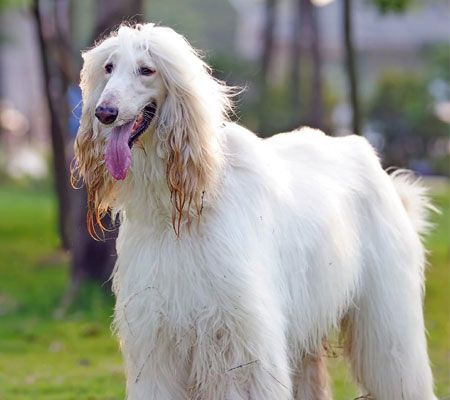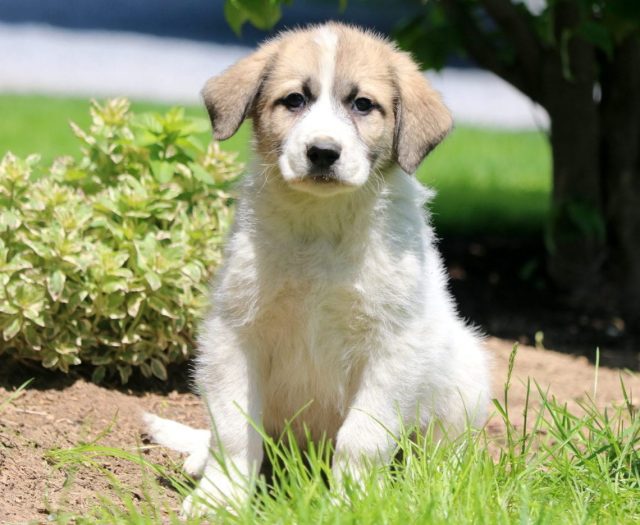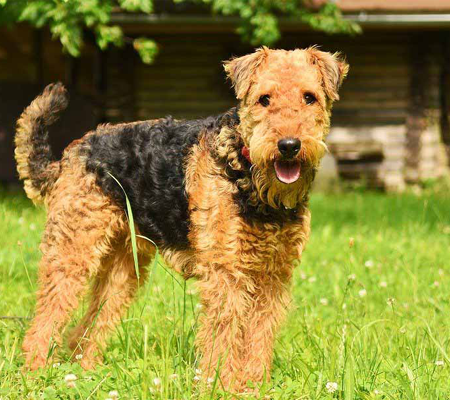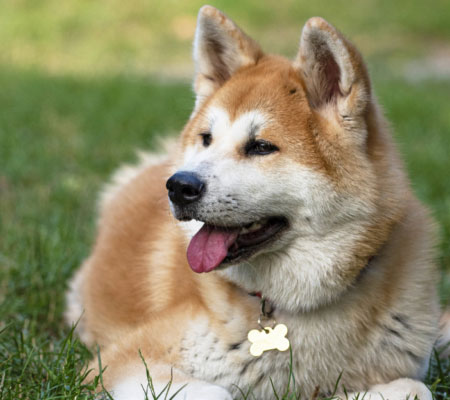Burgos Pointing Dogs are huge, aristocratic
hunting dogs. They work tirelessly in the field and can adapt to any terrain or
game, including fur and feathers. This dog is best suited to rural living or at
the very least a house with a wide safe yard in which they may run around
freely. They also need an active household since they thrive on movement and
exercise. Even if they could adjust to an apartment, this dog would need a lot
of daily activity - genuine exercise, not just a walk - to be satisfied. If
they are not adequately exercised, they can become harmful.
The Burgos Pointing Dog is a devoted and
trustworthy companion dog. They are excellent family pets since they are calm
and friendly with youngsters. They are suitable for new owners, while a firm
but fair owner is preferred. This dog does not respond well to harsh training
techniques; instead, they prefer calm, quiet owners that are confident and
kind. They have a characteristic short and thick coat that is generally liver
and white in colour, with extensive ticking that gives the coat a grizzled
look. This is one dog who lives up to their regal elegance appearance by being
obedient and compassionate.
Burgos Pointer Highlights
Breed Size
Large
Nature
Friendly, Outgoing, Playful, Protecative
Energy Level
Active
Intelligence
Medium
Barking Level
When Necessary
Coat Length
Short
Breed Group
Gundog
Droll Amount
Low
Good with
Familes, Children, Dog
Feed Level
Medium, High
Colour Type
Liver and white, grizle
Other Facts
Easy to train, easy to groom, easy to kept at home, easy for walk, loyal for their owners.
Burgos Pointer Dog History
The Burgos pointer, also known as the Spanish
pointer or the Perdiguero de Burgos, is a big and strong Spanish dog. This dog
is supposed to have originated in the 16th century in the centre of Spain.
Despite the absence of records, it is usually assumed that the Pachón Navarro
(a pointer) and the Sabueso Espaol (a scenting dog) were the breed's
forerunners. Over the years, the Burgos Pointer is considered to have
influenced the genetics of a number of European pointing dogs.
The Burgos Pointer is a hunting dog that thrives
in a rural environment where it may roam freely. Historically, the Burgos
Pointer was a heavier and larger dog, but it has developed into a thinner dog
that is faster on its paws and better at tracking smaller animals. This species
was developed to hunt deer, but it is currently employed to hunt a wide range
of wildlife, including birds, rabbits, and foxes. This breed is unconcerned
about getting its toes wet and will happily hunt its prey on land or in water.
They can hunt and retrieve in addition to pointing, making them a sought-after
and versatile hunting companion.
The Burgos Pointer was admitted into the UKC's
Gun Dog group in 1996, and they are also recognised by the FCI's Continental
Pointing Dog division. While they have gone perilously near to extinction in
the past, they have seen a quiet resurgence in recent years and are now highly
regarded in Spain, where they are still utilised for their intended function.
22-27 inch 18-25 kg 13-15 year
Height

Weight

Life Span
Burgos Pointer Health and Care
This robust working dog has a lifetime of 12 to
14 years and is normally in good condition. There are only a few considerations
to make:
External Otitis
Because these dogs are excellent swimmers who
adore the water, keeping their ears clear of moisture and debris can be tough.
Unfortunately, because the ear flaps hang down, there is no real way for water
to drain, so it lingers in the ear canal and serves as a mini-incubator for
bacteria and yeast.
Hunting Accidents & Injuries
Hunting dogs are significantly more vulnerable to
accidents and injury than dogs that spend their days indoors or on leash walks.
They are prone to spraining and straining their muscles, as well as cuts and
lacerations. After returning after an adventure in the wide outdoors, these canines
should be given a quick once-over to ensure they are in good working condition.
Burgos Pointer Care
It is critical to take appropriate care of the
animals when growing Burgos Pointer dogs. They are lively and tireless dogs.
They're more than up to the task of even the most active family, and they
shouldn't be adopted as family pets unless they'll get lots of physical
activity, such as a daily, brisk, lengthy walk or jog.
Apartment life is not suggested for Burgos
Pointer dogs. Indoors, they are moderately active and thrive on land.
The Perdiguero de Burgos has a silky coat that is
very easy to maintain. Simply clean your teeth with a hard bristle brush on a
regular basis and wash only when required.
Burgos Pointer Dog Breed Care Tips and
Important Instructions
The cost of caring for a burgos pointer, which
includes everything from food and treats to veterinary care, toys, and a
licence, may be between $420 and $780 per year. This does not include capital
expenditures such as sterilisation, a collar and leash, a dog carrier, or a doggy
kennel. Tip: Before taking your burgos pointer home for the first time,
double-check that you have all of the necessary equipment.
Physical exercise is necessary for Burgos
Pointers to keep active, refresh their minds, and stay healthy. Burgos pointers
benefit from daily action because it helps them avoid boredom, which may
contribute to nasty behaviour. Many of your burgos pointer's inherent needs to
chew, dig, pursue, retrieve, and herd may be satisfied with some outside fun.
Exercise requirements vary depending on your burgos pointer's health and age,
but 10 minutes in the garden and a couple of daily trips down the street are
unlikely to suffice. If your burgos pointer is a 6- to 18-month-old adolescent,
her needs will almost certainly be significantly higher.
Brushing your burgos pointer can help keep it
clean and decrease shedding. During the summer or other warm weather, check for
fleas and ticks on a daily basis. Bathing burgos pointers only a few times a
year is not uncommon. Cut or comb all mats from the burgos pointer's hair
before bathing. Rinse the coat thoroughly to remove any soap residue;
otherwise, dirt will adhere to the soap residue.
Puppies, as opposed to adults, are unquestionably
the most manageable. When holding a burgos pointer puppy, place one hand behind
the dog's chest and support the back legs and rump with the forearm or other
hand. Never try to raise or grasp your dog by the forelegs, back of the neck,
or tail. Lift a bigger, full-grown burgos pointer from below, using one arm to
hold his or her chest and the other arm to support his or her rump.
Burgos Pointer Feeding
- Between the ages of eight and twelve weeks,
Burgos Pointer pups require four bowls of food every twenty-four hours.
- 3 to 6 month old Burgos Pointer puppies should be
fed three times a day.
- Puppies aged six months to one year should be fed
twice every 24 hours.
- One meal per day is generally plenty by the time
the burgos pointer reaches his first birthday.
- Two lighter meals may be preferred by certain
burgos pointers. It is your responsibility to adjust to your burgos pointer's
dietary habits.
Full-grown burgos pointers get a complete diet
from premium-quality dry food, which may be blended with canned food, water, or
broth. Fruits and vegetables, boiled eggs, and cottage cheese may appeal to
your burgos kar, but they should account for less than ten percent of his daily
ration. Puppies of Burgos Pointers should be fed high-quality, name-brand puppy
food. However, you should strive to restrict "people food" because it
can lead to mineral and vitamin shortages, as well as bone and tooth troubles,
as well as finicky eating habits and obesity. Always provide clean, potable
water, and wash water and food dishes often.
Burgos Pointer Fun Facts
- By the next century, pointers had established
themselves as the dominant hunting dog, proving to be adept at pointing and
tracking. Pointers are noted for being strong workers with remarkable speed,
endurance, and scenting abilities.
- These dogs are loving companions who enjoy
cuddling, but they have a low tolerance for other animals. Along with exercise,
these high-energy dogs require attention, companionship, and care in order to
have a good life. The German shorthaired pointer belongs to the American Kennel
Club's (AKC) sports category of dogs.
- The Pointer is an energetic dog breed that is
ideal for busy couples or families. According to the Kennel Club, they will
need at least 2 hours of activity every day. Pointers are excellent house dogs
and one of the best big companion dogs when given enough exercise.
- Because not all breeds are fond of water, it's
crucial to perform some preliminary study. German Shorthaired Pointers are
reputed to be strong swimmers and are capable of swimming.
Burgos Pointer Home Training Tips and General
Information
You must maintain a constant check on your puppy
till she learns. When you're unable to, you'll have to confine her. Create a
routine for the puppy that will assist him in swiftly settling down. Hourly
toilet trips, feeding times, sleep times, walks, play time, exercise, and so on
will all be part of the schedule. A puppy who has a full day has no time to get
bored and misbehave.
Teach the dog to respect you. Burgos Pointers
form packs and follow a leader naturally. If you establish your dominance in no
clear terms, teaching will be simple since the puppy will always accept your
directions and will not resist your authority.
Make use of only positive training methods. Never
yell at, hit, or otherwise mistreat your Burgos Pointer. It's not only cruel,
but it can also lead to behavioural issues. Electric shocks, prong collars,
sprays, and other methods may cause injury to the animal.
"Nothing in this life is free," teach
the puppy. This is a philosophy that is widely accepted as a valuable teaching
tool. If you do this, the dog will learn that in order to receive attention, a
stroll, or a treat, he must behave nicely.
From the first day, demonstrate the meaning of
the word "no." Encourage actions such as jumping, snarling, tugging,
yipping, and dashing out of open gates and doors. When there is poor behaviour,
appreciate respect and ignore or leave. The puppy will quickly learn that if he
misbehaves, he will lose his buddy.
You must catch the Burgos Pointer in the act of
breaking a habit and shock her by shaking a bottle of pebbles. As soon as
you've done this, tell him to change his behaviour and give him a treat and
your praise. Burgos Pointers don't remember what happened before, thus
chastising him after an incident is pointless.
Make a point of addressing him by his first name.
Never say "Awful TOM" or "No Tom," since this may cause
uncertainty and lead the Burgos Pointer to believe that if you mention his
name, something bad is about to happen. Hugs, stroking, strolls, munchies, and
other pleasurable experiences should be associated with the puppy's name. If
this happens, if you call out his name, he will approach freely.
Create a short and quick coaching routine, such
as ten minutes three times a day. Long, repetitive lessons might bore the
Burgos Pointer and cause him to lose interest in the learning session. Make
lessons more enjoyable by using trick training sessions to demonstrate commands
like as sit, down, and come.
Learn everything there is to know about crate
training, leash walking, housebreaking, and food training. Every Burgos Pointer
puppy should be able to master these kindergarten lessons. Know about all the
traits as well as qualities of the breed. This will give you important ideas on
how to effectively coach the dog.
FAQS
|
Is it simple to teach pointer dogs? |
|
Although English Pointers are not domineering dogs, they can be difficult
to teach due to their proclivity for being distracted by interesting sights,
noises, and smells. To keep a dog's attention, you'll need some training
experience. |
|
Is it necessary to train pointer dogs to point? |
|
The impulse to point is strong in dogs that have been bred and trained
for hunting. For a number of reasons, non-hunting breeds may elevate a paw
and point. Pointing allows dogs and their handlers to work together as a
team. |
|
What is the best way to care for a pointer dog? |
|
At least three times a week, she should brush her teeth. Maintain a
regular diet for your dog and avoid feeding her human food. Feed her a
high-quality, age-appropriate food. Regularly exercise your dog, but don't
overdo it. |
|
Is it true that pointer dogs are cuddly? |
|
These dogs are loving companions who enjoy cuddling, but they have a low
tolerance for other animals. Along with exercise, these high-energy dogs
require attention, companionship, and care in order to have a good life. The
German shorthaired pointer belongs to the American Kennel Club's (AKC) sports
category of dogs. |
|
What kind of workout does a pointer require? |
|
The Pointer is an energetic dog breed that is ideal for busy couples or
families. According to the Kennel Club, they will need at least 2 hours of
activity every day. Pointers are excellent house dogs and one of the best big
companion dogs when given enough exercise. |
Burgos Pointer Unique Name
| Male Name | Female Name |
|---|---|
| Bandit | Ava |
| Barkley | Camilla |
| Bingo | Fiona |
| Blake | Hazel |
| Buck | Honey |
| Harvey | Jade |
| Kane | Lady |
| Lenny | Libby |
| Mickey | Luna |
| Ned | Mia |
| Norm | Mya |
| Remy | Nola |
| Rusty | Peaches |
| Sam | Poppy |
| Shamus | Rosie |
| Wally | Scarlet |
| Yukon | Butterball |
| Tuesday | Buttons |
| Whiskers | Tess |
| Xena | Nova |





